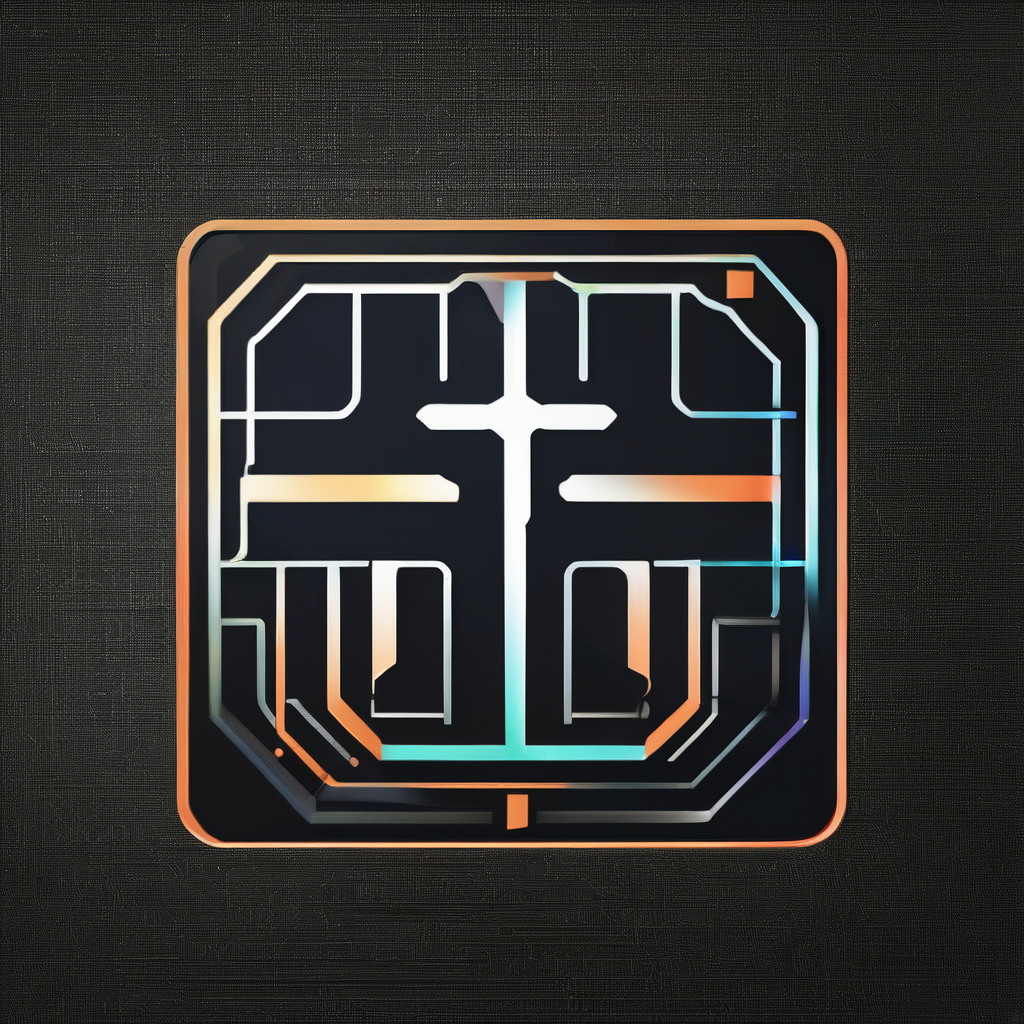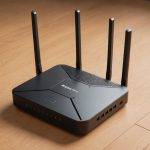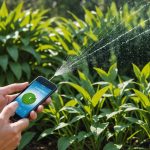Unlocking Smart Irrigation: Your Ultimate Smartphone Guide to Efficiently Managing Sprinklers for Optimal Water Conservation
In the era of smart technology, managing your garden’s irrigation system has never been more efficient, sustainable, or convenient. Smart irrigation systems, controlled effortlessly through your smartphone, are revolutionizing the way we care for our gardens, crops, and the environment. Here’s a comprehensive guide to help you understand, implement, and benefit from smart irrigation.
What is Smart Irrigation?
Smart irrigation systems are a significant leap from traditional fixed-schedule irrigation methods. These systems use advanced technologies such as Wi-Fi-enabled sprinkler controllers, soil moisture sensors, and weather-based adjustments to deliver the right amount of water to your plants at the right time.
Also to read : Ultimate guide to seamless multi-device management: unlock your smartphone’s power for effortless ecosystem control
Key Components of Smart Irrigation Systems
-
Wi-Fi Sprinkler Controllers: These are the heart of any smart irrigation system. They allow you to set schedules, monitor watering, and adjust settings remotely from your smartphone or other smart devices[1][2][5].
-
Soil Moisture Sensors: These sensors determine the moisture levels in the soil, ensuring your plants get only the water they need. They can adjust watering schedules to avoid over- or under-watering[1][2][4].
Also to read : Unlocking ultimate control: conveniently monitor your smart home water heater with your smartphone
-
Weather-Based Adjustments: Smart irrigation systems integrate with local weather data to automatically adjust watering schedules based on rain forecasts, temperature, humidity, and other environmental factors[1][2][3].
-
Drip and Spray Irrigation Options: Both drip and spray irrigation methods are available in smart irrigation systems. Drip systems are ideal for focused watering of specific plants, while spray systems cover larger areas[1][4].
How Smart Watering Systems Work
Smart watering systems are designed to optimize irrigation by automatically adjusting water delivery based on various factors.
Sensors and Data Collection
Soil moisture sensors are placed in the ground to monitor the moisture levels in the soil. These sensors provide real-time data to the system, which then adjusts the watering schedules accordingly[2].
Weather Data Integration
Many systems connect to local weather forecasts to adjust watering schedules. For instance, if rain is predicted, the system may delay or skip watering to avoid unnecessary water usage[1][2][3].
Scheduling and Smart Controllers
Users can set specific watering schedules through a smartphone app or web interface. The smart controller processes information from sensors and weather data, automating the watering process and adapting in real-time to changing conditions[2][5].
Remote Access and Data Analytics
Many smart watering systems can be controlled remotely via mobile apps, allowing users to monitor and adjust their watering practices from anywhere. Some systems also include analytics features, enabling users to track water usage and plant performance over time[1][2][5].
Benefits of Smart Irrigation Systems
Smart irrigation systems offer numerous benefits that make them an attractive option for gardeners and farmers alike.
Water Conservation and Cost Savings
With a smart irrigation system, you’re not only conserving water but also reducing your monthly utility bills. These systems prevent unnecessary water usage by adjusting based on weather and soil conditions[1][3][5].
Healthier Plants and Landscapes
Plants thrive when they’re watered appropriately. Smart irrigation promotes healthier roots, reduces fungal growth, and avoids soil erosion by delivering the exact amount of water required[1][2][3].
Convenience and Remote Control
Gone are the days of manually setting your sprinklers. With smart irrigation, you can manage your garden’s watering needs with a tap on your phone, making it especially useful for homeowners who travel frequently[1][2][5].
Environmental Sustainability
Efficient water usage contributes to a more sustainable environment. Smart irrigation minimizes waste, reducing the impact on local water resources and making your property more eco-friendly[1][2][3].
Features to Look for in a Smart Irrigation System
When selecting a smart irrigation system, there are several key features to consider:
-
Sensors: Look for systems with multiple sensors that can measure soil moisture, temperature, light intensity, and humidity. This comprehensive data helps assess plant health more accurately[2].
-
Mobile App Compatibility: A user-friendly app can help you monitor data remotely, send alerts, and provide personalized care recommendations based on the information collected[2][5].
-
Data Analytics: Some systems offer advanced data analytics, allowing you to track trends over time. This can help with long-term planning and understanding how different environmental factors affect your plants[2].
-
Connectivity: Options for Wi-Fi or Bluetooth connectivity enable real-time updates and remote monitoring. This feature is valuable for those who travel or have busy schedules[2].
-
Alerts and Notifications: A good system should notify you of critical conditions, such as low moisture or excessive light, so you can take timely action to prevent plant stress[2].
How to Get Started with a Smart Water Irrigation System
Implementing a smart irrigation system is easier than you think. Here’s a step-by-step guide to help you get started:
Assess Your Garden’s Water Needs
Begin by identifying which areas require watering and the specific water requirements for each plant type. This assessment will help determine the right mix of drip and spray irrigation for your garden[1].
Select the Right Components
Based on your landscape and budget, choose components such as Wi-Fi controllers, soil sensors, and weather-based systems. It’s advisable to consult with experts to select the most suitable products for your property[1].
Professional Installation
Professional installation is key to a fully functional system. Ensure that each component is installed correctly, tested, and optimized for your garden’s unique layout[1].
Maintenance and Support
Regular maintenance ensures that your system remains efficient. Look for providers that offer ongoing support to troubleshoot any issues, perform updates, and keep your irrigation system running smoothly[1].
Comparative Analysis of Popular Smart Irrigation Systems
Here is a comparative table of some popular smart irrigation systems to help you make an informed decision:
| System | Wi-Fi Connectivity | Soil Moisture Sensors | Weather Integration | Remote Access | Data Analytics |
|---|---|---|---|---|---|
| Rachio 3 | Yes | Yes | Yes | Yes | Yes |
| Hunter Hydrawise HC | Yes | Yes | Yes | Yes | Yes |
| Netro Sprite | Yes | Yes | Yes | Yes | Limited |
| RainMachine Touch HD-12 | Yes | Yes | Yes | Yes | Yes |
| Orbit B-hyve XR | Yes | Optional | Yes | Yes | Limited |
| Yardian Pro | Yes | Yes | Yes | Yes | Yes |
Practical Insights and Actionable Advice
Optimize Water Usage
One of the most significant advantages of smart irrigation is the ability to optimize water usage. By integrating soil moisture sensors and weather data, you can ensure that your plants receive exactly the amount of water they need, reducing waste and conserving water resources[1][2][3].
Monitor and Adjust Remotely
With remote access via mobile apps, you can monitor and adjust your watering schedules from anywhere. This feature is particularly useful for busy homeowners or those who travel frequently[1][2][5].
Use Drip Irrigation
Drip irrigation is highly efficient as it delivers water directly to the plant roots, reducing evaporation and runoff. This method is especially beneficial in arid climates where water conservation is crucial[1][4].
Maintain Your System
Regular maintenance is essential to ensure your smart irrigation system operates efficiently. This includes checking sensors, updating software, and performing routine tests to ensure all components are functioning correctly[1].
Real-World Examples and User Experiences
Case Study: Smart Irrigation in Dubai
In arid climates like Dubai, smart irrigation systems are vital for preserving water while maintaining beautiful, healthy landscapes. For instance, Zyonz Technologies offers innovative solutions and dedicated support, making the transition to smart irrigation simple and beneficial. Users in Dubai have reported significant water savings and improved plant health since switching to smart irrigation systems[1].
User Testimonial
“Since installing the Rachio 3 smart irrigation system, I’ve noticed a significant reduction in my water bill and my plants look healthier than ever. The remote access feature is a game-changer; I can adjust my watering schedules from anywhere, ensuring my garden is always well-watered,” says Jane, a homeowner in California.
Final Thoughts: A Greener, Smarter Future
Investing in a smart irrigation system is not just about convenience; it’s also about making an environmentally responsible choice. In an era where water conservation is increasingly important, these systems offer a sustainable solution for gardeners, farmers, and the environment.
As Dr. Maria Rodriguez, an expert in sustainable agriculture, notes, “Smart irrigation systems are a crucial step towards sustainable water management. By optimizing water use and reducing waste, we can ensure healthier crops, lower water bills, and a more sustainable future for our planet.”
With the right tools and knowledge, you can transform your garden into a thriving, eco-friendly oasis. So why wait? Embrace the future of smart irrigation today and start making a positive impact on your garden and the environment.











